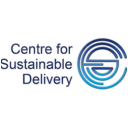Most patients do not have serious secondary headache. Red flags indicate the need for urgent assessment to exclude a secondary cause. The most consistent indicators for serious secondary causes for headache are:
- Thunderclap (sudden onset) headache (consider SAH and its differential)
- New focal neurological deficit on examination (e.g. hemiparesis)
- Systemic features (considering GCA, infection such as meningitis or encephalitis, etc)
- New progressive headache in a patient over 50 (most headaches presenting in patients
over 50 are benign, but there is an increased risk of secondary pathology with
increasing age)
Thunderclap headache is usually occipital or global. It is defined as a severe abrupt onset headache, usually reaching its peak instantaneously, but headache can progress over up to 5 minutes. The main consideration is subarachnoid haemorrhage, but other causes include cervical artery dissection, intracranial haemorrhage, posterior circulation stroke, cerebral venous sinus thrombosis and spontaneous intracranial hypotension.
Anyone presenting with a thunderclap headache should have a same day referral (which may be through A&E), even in delayed presentations.
A new focal neurological symptom (eg seizure) or sign (eg hemiparesis) in a patient with a new progressive headache indicates the possibility of an intracranial pathology and this should prompt an urgent referral for assessment and appropriate imaging. The referring clinical should decide whether this merits attendance at A&E, a call to the appropriate specialist service or an urgent referral. Specific syndromes that may indicate the possibility of a brain tumour are listed below, but extra dural / sub dural haematomas, cerebral venous sinus thrombosis, viral encephalitis and other intracranial pathology can present similarly.
Headache suggesting the possibility of a brain tumour
- New headache plus sub-acute progressive focal neurology
- New headache plus seizures
- New headache with personality or cognitive change not suggestive of dementia, with no
psychiatric history and confirmed by witness
Fever, neck stiffness and rash should raise the consideration of infection such as meningitis and constitutional symptoms and scalp tenderness should raise the consideration of Giant Cell Arteritis (GCA).
Most headache in older patients will have a benign cause (mainly migraine), but the clinician should have a lower threshold for considering a secondary cause in an older patient with a new persisting or worsening headache. Anyone over 50 with a new headache should have a CRP +/- plasma viscosity +/- ESR + FBC as per local protocol to consider GCA. Anyone where this is a serious consideration should have an urgent referral and consideration of steroids as per local protocol.


 Scan the code to visit our website
Scan the code to visit our website